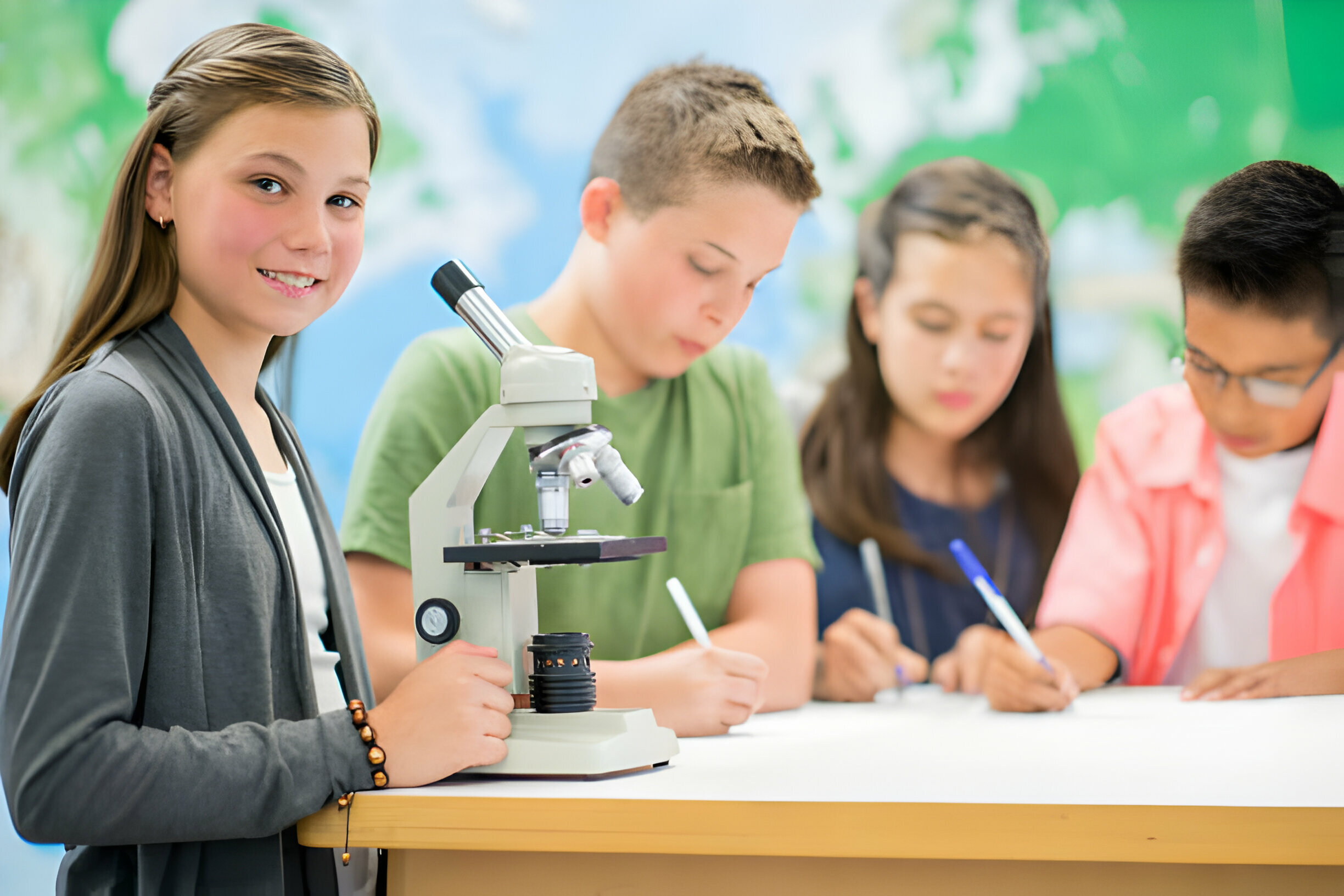As you embark on a journey through the realm of 7th-grade science fair projects, imagine each experiment as a key unlocking a door to endless possibilities. You’ll delve into color and memory, DNA extraction, flexibility, and more! These hands-on experiences will challenge and inspire you as you unravel the mysteries of science. Get ready to explore innovative concepts like electroplating and spherification that will ignite your curiosity and critical thinking skills.
Color and Memory Experiment
You can explore the impact of different colors on memory in the Color and Memory Experiment available for your 7th-grade science fair project. By studying memory retention, color associations, cognitive performance, visual stimuli, and recall accuracy, you will uncover how various hues affect our ability to remember information. Through this experiment, you will observe how specific colors may enhance or hinder memory recall. By analyzing participants’ responses to colored stimuli, you can draw conclusions about the relationship between color and memory. This hands-on exploration will provide valuable insights into how visual cues influence our brain’s ability to retain and retrieve information effectively. Get ready to dive into a colorful journey of discovery in understanding the intricate connection between colors and memory!
Sugary Drinks and Teeth Experiment
When conducting the Sugary Drinks and Teeth Experiment, be sure to document the effects of soda and juice on simulated teeth made from eggshells. Pay attention to how these beverages impact tooth enamel, as acid erosion plays a significant role in oral hygiene and dental health. Consider the carbonation effects present in sodas and juices, as they can contribute to weakening tooth structure. This experiment not only sheds light on the potential harm sugary drinks pose to teeth but also emphasizes the importance of maintaining good oral health practices. By understanding how these beverages interact with tooth surfaces, you gain valuable insights into safeguarding your dental well-being through informed choices and proper care routines.
DNA Extraction
For the DNA Extraction topic, you can learn to extract DNA from an onion and apply the method to other fruits or vegetables. DNA extraction techniques allow you to delve into genetic analysis, examine cell structures, and extract organic materials for various molecular biology applications. By understanding the process of extracting DNA, you gain insight into the fundamental building blocks of life within different organisms. This hands-on experiment not only teaches you about the intricate nature of genetic material but also provides a practical way to explore scientific concepts in a tangible manner. Through this exploration, you can uncover the complexities of DNA and its role in shaping living organisms around us.
Flexibility Experiment
Exploring flexibility by comparing test subjects’ range of motion before and after stretch exercises can provide valuable insights into the impact of physical activities on the body. Stretching techniques play a crucial role in enhancing muscle flexibility and joint mobility, leading to improved overall fitness levels. By incorporating various stretching exercises into your routine, you can experience firsthand the benefits that flexibility training offers. Not only does it help in preventing injuries during physical activities, but it also contributes to better posture and increased range of motion. Embrace the opportunity to experiment with different stretching techniques and witness how they positively affect your body’s flexibility and overall well-being.
DIY Grow Box Construction
The DIY grow box construction guide at Uplifting Mayhem provides detailed instructions on creating a grow box using cardboard, foil, and a light socket. If you’re considering indoor gardening, this project can enhance your understanding of plant growth through hands-on experience. Here are some key aspects to consider:
- Plant Growth: Witness the magic of nurturing plants from seeds to full bloom.
- Light Spectrum: Explore how different light wavelengths impact plant development.
- Temperature Control: Master the art of maintaining optimal conditions for your plants’ well-being.
- Nutrient Absorption: Delve into the importance of providing essential nutrients for robust plant growth.
Embark on this journey of discovery and cultivate your green thumb with this engaging project!
Biofilm Collection and Control
Biofilm Collection and Control experiment provides detailed instructions on building an apparatus to collect biofilm for experimentation. When exploring biofilms, it’s crucial to understand various aspects such as biofilm prevention techniques, the intricate world of biofilm microbial communities, the mechanisms behind biofilm resistance, effective control strategies against biofilms, and the environmental impacts associated with these structures. By delving into these areas, you can gain a comprehensive understanding of how biofilms function and ways to manage them effectively. Take a look at the table below for a quick overview:
| Biofilm Aspect | Key Points |
|---|---|
| Biofilm Prevention Techniques | Implement preventive measures early on |
| Biofilm Microbial Communities | Study diverse microbial populations within biofilms |
| Biofilm Resistance Mechanisms | Explore mechanisms that make biofilms resistant |
| Biofilm Control Strategies | Develop effective strategies to control biofilm growth |
Caffeine and Typing Speed Experiment
In the caffeine and typing speed experiment, researchers investigate if caffeine enhances typing speed by utilizing a scientific method for experimentation. If you’re curious about the impact of caffeine consumption on your typing performance, this study will pique your interest. As you delve into the results, consider how caffeine affects not only your typing but also your alertness levels throughout the day. The study might shed light on how cognitive function can be influenced by this common stimulant. Ultimately, understanding the relationship between caffeine and typing speed could lead to valuable insights into productivity enhancement in various tasks.
Phototropism in Plants Experiment
After exploring the effects of caffeine on typing speed, it’s time to delve into plant behavior with the “Phototropism in Plants Experiment.” Discover more about plant growth and light responsiveness through this botanical experiment. Investigate how different plants exhibit leaf orientation towards light sources, showcasing growth patterns influenced by phototropic behavior. This hands-on project allows you to witness the fascinating ways in which plants interact with light, demonstrating their unique abilities to adapt and thrive. Engage in a captivating exploration of nature’s wonders as you study phototropism and its impact on the development of plants. Get ready to observe firsthand how plants dynamically adjust their growth based on light cues, unveiling the beauty of their natural responses.
Water Filtration System Design
Explore how charcoal filters can purify water effectively in the Water Filtration System Design experiment, utilizing materials readily available to you. Dive into the following emotional prompts:
- Discover the satisfaction of witnessing improved filtration efficiency analysis.
- Feel a sense of accomplishment as you conduct water quality assessment firsthand.
- Experience excitement while optimizing your filtration system for better performance.
- Find peace of mind knowing your Contaminant removal study is contributing to cleaner water.
Text Abbreviations as a Language
Let’s delve into how text abbreviations form a unique language among communicators. In today’s digital age, emoji evolution has transformed the way we express emotions in messages. Social media slang and texting etiquette play crucial roles in effective communication through shortened phrases and symbols. Communication shortcuts like “LOL” or “BRB” have become common in daily interactions, enhancing quick exchanges. Digital expressions now encompass a wide array of abbreviations that convey complex ideas concisely. Understanding this modern language is key to navigating online conversations efficiently. So next time you encounter unfamiliar text abbreviations, embrace the evolving lexicon of communication shortcuts for seamless interaction in the digital realm.
Slime Design Experiment
Moving on from exploring the language of texting, let’s dive into the fascinating world of slime design experiments. When creating your slime projects, consider conducting a slime consistency analysis, assessing how different ingredients interact with each other, examining variations in viscosity, evaluating the impact of colors, and comparing textures for an engaging study. Here are some bullet points for you:
- Discover the unique feel of each slime variant.
- Explore how colors influence the overall slime experience.
- Compare thick and runny consistencies for diverse sensory experiences.
- Experiment with different textures to find your favorite slime type.
Get ready to unleash your creativity and scientific curiosity through this fun and hands-on exploration!
Electroplating of Coins
To enhance your understanding of electroplating coins, consider experimenting with variables like temperature to observe the effects on the process. Electroplating plays a crucial role in coin preservation and currency protection by providing a protective metal coating. This process involves depositing a layer of precious metal onto the surface of the coin, ensuring its longevity and enhancing its aesthetic appeal. Through electroplating, numismatic enhancements can be achieved, adding value to collectible coins while safeguarding them from wear and corrosion.
| Coin Preservation | Metal Coating |
|---|---|
| Currency Protection | Precious Metal Plating |
| Numismatic Enhancements |
Germ Swabbing and Testing
Germ swabbing and testing experiment helps in identifying the presence of germs on various household items. When you dive into this project, you’ll uncover fascinating insights through techniques like swabbing techniques analysis, microbial detection methods, hygiene practices evaluation, and pathogen identification strategies. Discovering the effectiveness of sanitation measures can be eye-opening as you realize the importance of cleanliness in your surroundings. As you explore the world of germs through this experiment, remember that each swab reveals a hidden story about the items you interact with daily – a tale of microbes waiting to be uncovered.
Beverage Spherification Experiment
When you conduct the Beverage Spherification Experiment, you’ll witness the fascinating chemistry behind creating spherified beverages using a specialized kit. This experiment delves into the realms of molecular gastronomy and culinary chemistry, showcasing how scientific principles can be applied to gastronomic innovations. By exploring food science applications through edible experiments like spherification, you’ll not only learn about the transformation of liquids into delightful spheres but also understand the artistry behind modern culinary techniques.
| Molecular Gastronomy | Culinary Chemistry | Gastronomic Innovations |
|---|---|---|
| Creative Techniques | Flavor Enhancements | Unique Presentations |
| Textural Transformations | Chemical Reactions | Fusion Cuisine |
| Innovative Dishes | Ingredient Interactions | Avant-Garde Creations |
| Science in Cooking | Taste Modifications | Cutting-Edge Recipes |
| Artisanal Creations | Experimental Flavors | Futuristic Dining |
This table aims to evoke excitement and curiosity towards the intersection of science and cuisine, inviting you to explore new horizons in the realm of food experimentation.
Packaged Foods Calorie Counts Experiment
Exploring the impact of packaged foods calorie counts on dietary choices can enhance awareness of nutritional content and promote healthier eating habits. Have you ever considered how food labeling, nutrition analysis, calorie estimation, food packaging, and diet assessment play a role in what you choose to eat? Here are four emotional responses that might resonate with you:
- Feeling empowered by understanding the nutritional value of what you consume.
- Experiencing guilt over realizing how many hidden calories certain packaged foods contain.
- Finding relief in being able to make more informed decisions about your diet.
- Feeling motivated to prioritize healthier options after seeing the calorie counts on packaged foods.



